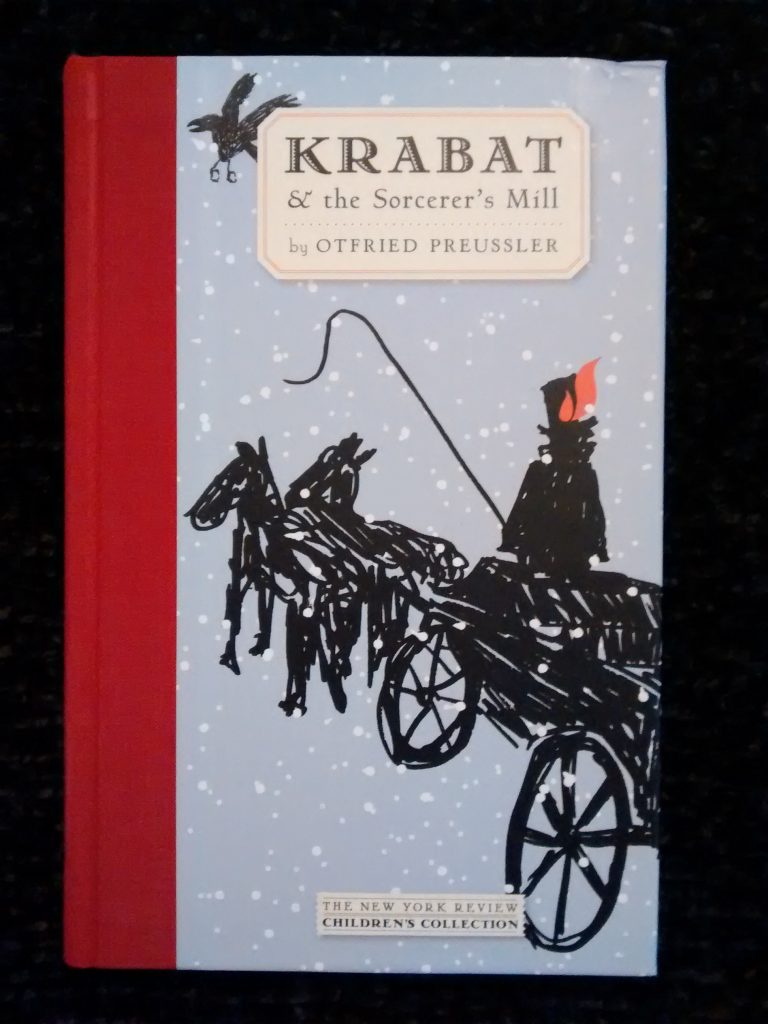“There’s a kind of magic that must be learned with toil and difficulty, line by line, spell by spell, the magic of the Book of Necromancy; and then there’s another kind that springs from the depths of the heart, from caring for someone and loving him. It’s hard to understand, I know, but you had better trust that magic, Krabat.”

Just in time for Halloween, here’s a spooky book that’s been a favorite of German-speaking children since 1971.
Entitled simply Krabat, it first appeared in English as The Satanic Mill – an accurate title but not one that screams “stocking stuffer.” So some shrewd editor has given it a new English title remarkably similar to the US title of the first Harry Potter book, Harry Potter and the Sorcerer’s Stone: namely, Krabat and the Sorcerer’s Mill.
To be fair, that’s also accurate, though if you pick up this book hoping for something in the HP vein, you’ll notice a distinct lack of quaint school uniforms, lovable professors, and zany spells. The HP series does engage with darkness and death, but its overall mood is fun and sparkly (and merchandisable). In Krabat there’s not much sparkle to balance out the murder, suicide, nightmares, and heavy bags that no one wants to know the contents of. There’s a guy called Big Hat with – wait for it – a big hat, but it doesn’t tell people whether they’re Hufflepuffs or whatever. There’s a school for magic, but you wouldn’t want to enroll. Its only real plus is that there’s always plenty of oatmeal.
Krabat is a Wendish, aka Sorbian, boy living during the Thirty Years’ War. Like HP, he’s an orphan who receives a call (in this case, through a voice in his dreams) to join the apprentices at a mill that doubles as a school for magic. Although there’s camaraderie among the boys and a few traditions that brighten up the year, the prevailing atmosphere is one of dread. You never get the feeling that Krabat is any better off for having joined the mill and learned what there is to learn from the Book of Necromancy – by following the sorcerer’s call, he becomes ensnared in a trap from which spells cannot free him. If you’d like to know what does free him, buy it from the NYRB here.
The NYRB translation is by Anthea Bell, one of the superstars of the translation world, whose work you’ll be familiar with if you’ve ever read an Asterix book in English. She also translated the Inkworld trilogy by Cornelia Funke, who loved Krabat as a child…another turn of the literary mill wheel.
I gave Krabat and the Sorcerer’s Mill to a fourteen-year-old American girl and she devoured it in a couple days. Her only complaint was that the dénouement is very rapid, which is true. Anyway, consider buying it for a young person you know…especially now that you don’t have to explain to their parents why The Satanic Mill is a great children’s book.
The Sorbian thing is interesting. There are still about 50,000 Sorbian speakers in Germany, and their language is divided into 2 standard dialects (Upper and Lower). Why they alone among the various Wendish peoples did not become totally Germanized is a mystery to me.